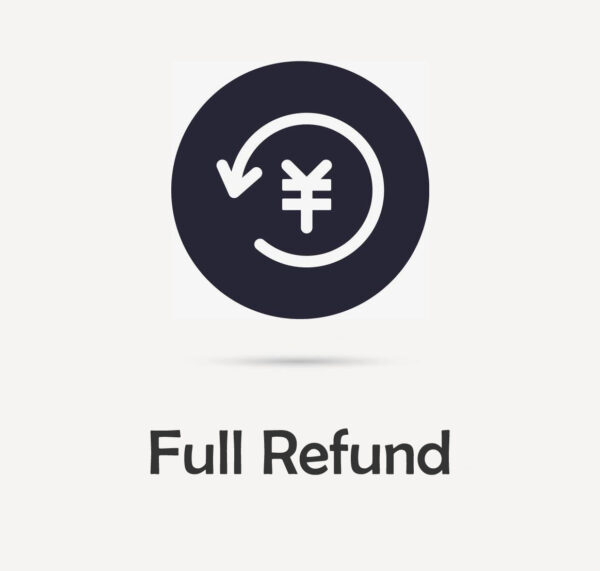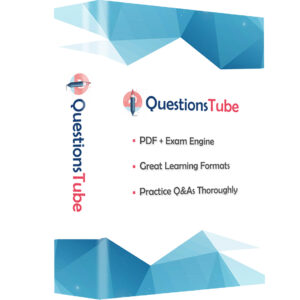Order our DP-420 Practice Questions Today and Get Ready to Pass with Flying Colors!
Product Description
The Designing and Implementing Cloud-Native Applications Using Microsoft Azure Cosmos DB certification is highly valued in the IT industry and obtaining it can open a variety of career opportunities. One of the best ways to prepare for the Microsoft DP-420 exam is by practicing with high-quality practice questions and understand the answers. QuestionsTube offers DP-420 exam questions with precise answers online for helping you make preparation for DP-420 exam.
Microsoft Certification DP-420 Exam Information
The Designing and Implementing Cloud-Native Applications Using Microsoft Azure Cosmos DB DP-420 exam is the part of the requirements for Microsoft Certified: Azure Cosmos DB Developer Specialty certification. Candidates for the DP-420 exam should have subject matter expertise designing, implementing, and monitoring cloud-native applications that store and manage data. The Microsoft DP-420 exam is available in multiple languages, including English, Japanese, Chinese (Simplified), Korean, German, French, Spanish, Portuguese (Brazil), Chinese (Traditional), Italian. Make sure that you can pass the DP-420 exam and earn the Microsoft Certified: Azure Cosmos DB Developer Specialty certification to promote your positions.
To make sure that you can prepare for the DP-420 exam well, you need to read all exam objectives first:
- Develop a design by storing multiple entity types in the same container
- Develop a design by storing multiple related entities in the same document
- Develop a model that denormalizes data across documents
- Develop a design by referencing between documents
- Identify primary and unique keys
- Identify data and associated access patterns
- Specify a default TTL on a container for a transactional store
- Choose a partitioning strategy based on a specific workload
- Choose a partition key
- Plan for transactions when choosing a partition key
- Evaluate the cost of using a cross-partition query
- Calculate and evaluate data distribution based on partition key selection
- Calculate and evaluate throughput distribution based on partition key selection
- Construct and implement a synthetic partition key
- Design and implement a hierarchical partition key
- Design partitioning for workloads that require multiple partition keys
- Evaluate the throughput and data storage requirements for a specific workload
- Choose between serverless and provisioned models
- Choose when to use database-level provisioned throughput
- Design for granular scale units and resource governance
- Evaluate the cost of the global distribution of data
- Configure throughput for Azure Cosmos DB by using the Azure portal
- Choose a connectivity mode (gateway versus direct)
- Implement a connectivity mode
- Create a connection to a database
- Enable offline development by using the Azure Cosmos DB emulator
- Handle connection errors
- Implement a singleton for the client
- Specify a region for global distribution
- Configure client-side threading and parallelism options
- Enable SDK logging
- Implement queries that use arrays, nested objects, aggregation, and ordering
- Implement a correlated subquery
- Implement queries that use array and type-checking functions
- Implement queries that use mathematical, string, and date functions
- Implement queries based on variable data
- Choose when to use a point operation versus a query operation
- Implement a point operation that creates, updates, and deletes documents
- Implement an update by using a patch operation
- Manage multi-document transactions using SDK Transactional Batch
- Perform a multi-document load using Bulk Support in the SDK
- Implement optimistic concurrency control using ETags
- Override default consistency by using query request options
- Implement session consistency by using session tokens
- Implement a query operation that includes pagination
- Implement a query operation by using a continuation token
- Handle transient errors and 429s
- Specify TTL for a document
- Retrieve and use query metrics
- Write, deploy, and call a stored procedure
- Design stored procedures to work with multiple documents transactionally
- Implement and call triggers
- Implement a user-defined function
- Choose when to distribute data
- Define automatic failover policies for regional failure for Azure Cosmos DB for NoSQL
- Perform manual failovers to move single master write regions
- Choose a consistency model
- Identify use cases for different consistency models
- Evaluate the impact of consistency model choices on availability and associated RU cost
- Evaluate the impact of consistency model choices on performance and latency
- Specify application connections to replicated data
- Choose when to use multi-region write
- Implement multi-region write
- Implement a custom conflict resolution policy for Azure Cosmos DB for NoSQL
- Enable Azure Synapse Link
- Choose between Azure Synapse Link and Spark Connector
- Enable the analytical store on a container
- Enable a connection to an analytical store and query from Azure Synapse Spark or Azure Synapse SQL
- Perform a query against the transactional store from Spark
- Write data back to the transactional store from Spark
- Integrate events with other applications by using Azure Functions and Azure Event Hubs
- Denormalize data by using Change Feed and Azure Functions
- Enforce referential integrity by using Change Feed and Azure Functions
- Aggregate data by using Change Feed and Azure Functions, including reporting
- Archive data by using Change Feed and Azure Functions
- Implement Azure Cognitive Search for an Azure Cosmos DB solution
- Adjust indexes on the database
- Calculate the cost of the query
- Retrieve request unit cost of a point operation or query
- Implement Azure Cosmos DB integrated cache
- Develop an Azure Functions trigger to process a change feed
- Consume a change feed from within an application by using the SDK
- Manage the number of change feed instances by using the change feed estimator
- Implement denormalization by using a change feed
- Implement referential enforcement by using a change feed
- Implement aggregation persistence by using a change feed
- Implement data archiving by using a change feed
- Choose when to use a read-heavy versus write-heavy index strategy
- Choose an appropriate index type
- Configure a custom indexing policy by using the Azure portal
- Implement a composite index
- Optimize index performance
- Evaluate response status code and failure metrics
- Monitor metrics for normalized throughput usage by using Azure Monitor
- Monitor server-side latency metrics by using Azure Monitor
- Monitor data replication in relation to latency and availability
- Configure Azure Monitor alerts for Azure Cosmos DB
- Implement and query Azure Cosmos DB logs
- Monitor throughput across partitions
- Monitor distribution of data across partitions
- Monitor security by using logging and auditing
- Choose between periodic and continuous backup
- Configure periodic backup
- Configure continuous backup and recovery
- Locate a recovery point for a point-in-time recovery
- Recover a database or container from a recovery point
- Choose between service-managed and customer-managed encryption keys
- Configure network-level access control for Azure Cosmos DB
- Configure data encryption for Azure Cosmos DB
- Manage control plane access to Azure Cosmos DB by using Azure role-based access control (RBAC)
- Manage data plane access to Azure Cosmos DB by using keys
- Manage data plane access to Azure Cosmos DB by using Microsoft Azure Active Directory (Azure AD)
- Configure Cross-Origin Resource Sharing (CORS) settings
- Manage account keys by using Azure Key Vault
- Implement customer-managed keys for encryption
- Implement Always Encrypted
- Choose a data movement strategy
- Move data by using client SDK bulk operations
- Move data by using Azure Data Factory and Azure Synapse pipelines
- Move data by using a Kafka connector
- Move data by using Azure Stream Analytics
- Move data by using the Azure Cosmos DB Spark Connector
- Choose when to use declarative versus imperative operations
- Provision and manage Azure Cosmos DB resources by using Azure Resource Manager templates (ARM templates)
- Migrate between standard and autoscale throughput by using PowerShell or Azure CLI
- Initiate a regional failover by using PowerShell or Azure CLI
- Maintain indexing policies in production by using ARM templates
DP-420 Practice Questions with Precise Answers
DP-420 practice questions of QuestionsTube are designed to help you prepare for the Designing and Implementing Cloud-Native Applications Using Microsoft Azure Cosmos DB exam by providing a thorough understanding of the exam topics. Each question is accompanied by a precise answer and a detailed explanation that help you understand the concept behind the question. This ensures that you not only memorize the correct answer but also understand the reasoning behind it.
Multiple Formats and Free Updates
QuestionsTube offers Microsoft DP-420 practice questions in two formats: PDF and Exam Engine. The PDF format allows you to study the questions on any device, while the Exam Engine format simulates the real exam experience. The two formats can be downloaded directly without waiting. Additionally, we offer free updates for different periods, including 3-month, 6-month, and 1-year intervals. This ensures that you have access to the most up-to-date content, and you can prepare for the DP-420 exam with confidence.
Money-Back Guarantee
We are confident in the quality of our DP-420 practice exam questions and offer a money-back guarantee. If you fail the exam with the DP-420 exam questions, we will refund your purchase price. This policy ensures that you can purchase our product with confidence, knowing that you are not taking any financial risk.
In conclusion, the Microsoft DP-420 study materials of QuestionsTube are an excellent resource for anyone preparing for the Designing and Implementing Cloud-Native Applications Using Microsoft Azure Cosmos DB exam. By using the DP-420 exam questions, you can prepare for the exam with confidence and increase your chances of passing the DP-420 exam on the first try.










Reviews
There are no reviews yet.